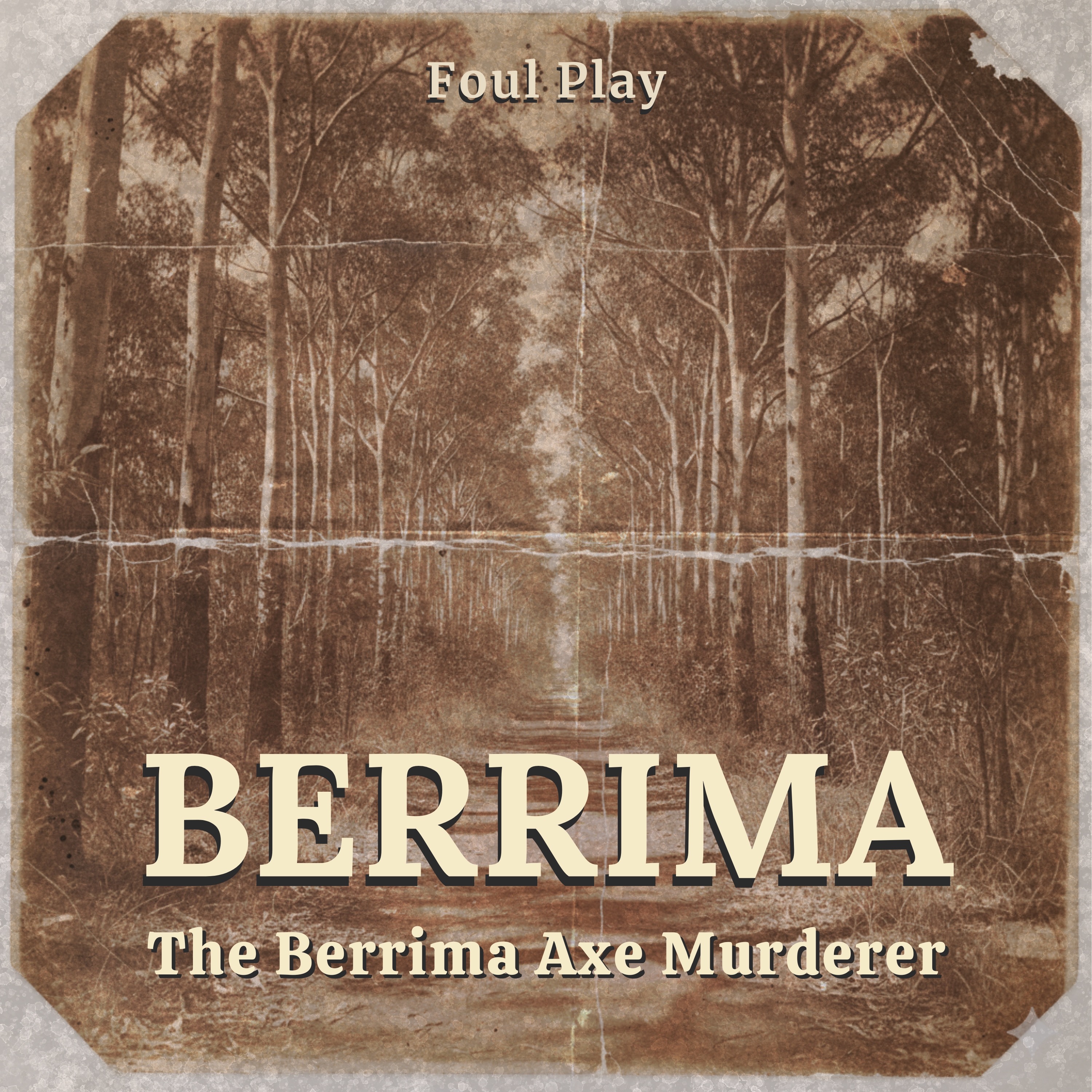Podcast Episode Details
Back to Podcast Episodes
Australia: The Berrima Axe Murderer of 1842
Season 36 Episode 6
In February 1842, a dingo unearthed a shallow grave near Ironstone Bridge, revealing the decomposing body of an Irish immi
Kearns Landregan was twenty-seven years old when he died on a dusty colonial road seven miles from Berrima. An Irish immigrant who'd traveled halfway around the world seeking opportunity in Australia, Landregan worked as a carrier—hard labor that required strength, reliability, and trust. On February 19th, 1842, he was driving his cart to market when he accepted what seemed like innocent companionship from a fellow traveler. He had no way of knowing that the man walking beside him had already murdered at least eight people. Among Lynch's victims was thirteen-year-old Mary Macnamara, a child who watched her entire family die before being assaulted and killed herself. There was Thomas Smith, a skilled plowman respected for his agricultural expertise. And there was an unnamed Aboriginal boy whose murder was barely recorded in colonial documents—a child whose name we'll never know but whose life mattered just as much.
Why This Case Matters
John Lynch's killing spree across colonial New South Wales exposed the brutal vulnerabilities of frontier justice and the systematic devaluation of certain lives in 1840s Australia. His 1836 acquittal for Thomas Smith's murder—despite clear evidence—taught him he could kill with impunity in a justice system stretched impossibly thin across vast wilderness. The case reveals how colonial authorities treated crimes differently based on victims' race and social status: a white child's murder shocked the colony, while an Aboriginal boy's death warranted barely a sentence in court records. The 2019 memorial plaque installed at All Saints Anglican Church in Sutton Forest represents a crucial shift toward victim-centered historical narrative, finally naming those whose stories were nearly lost to history.
Content Warning
This episode contains descriptions of violence against children and references to sexual assault. Listener discretion advised.
Key Case Details
Lynch's methodical approach to murder began after his 1836 acquittal emboldened him. Operating along isolated bush tracks in the Razorback Range, he targeted travelers with money or goods, striking them from behind with a tomahawk before stealing their possessions and assuming their identities.
Timeline & Investigation:
- March 1836: Thomas Smith murdered at Oldbury Farm; Lynch tried and acquitted
- 1836-1837: Multiple murders in Razorback Range (exact count unknown)
- November 1841: Mulligan family massacre (four victims including 13-year-old Mary)
- February 19, 1842: Kearns Landregan murdered near Ironstone Bridge
- February 21, 1842: Lynch arrested after Landregan's body discovered by Hugh Tinney
Resolution: Chief Constable James Chapman's investigation connected Lynch to Landregan's distinctive felt hat, which Lynch had been wearing openly around Berrima. Excavation of the Mulligan property revealed four shallow graves. Lynch confessed to all murders during questioning, showing no remorse. He was tried, convicted of Landregan's murder, and hanged at Berrima Jail on April 22nd, 1842 at age 29.
Historical Context & Sources
This episode draws on colonial court records from the 1842 Supreme Court trial proceedings in Sydney, contemporary newspaper accounts from the Sydney Morning Herald, and historical research from the Berrima District Historical and Family History Society. The case documentation reveals the challenges of frontier policing in 1840s New South Wales, where vast distances and limited communication made coordinating murder investigations exceptionally difficult. Sergeant James Wilson's creation of a primitive geographic profile to track disappearances along the Berrima-Campbelltown Road represented early criminal investigative innovation.
Published on 1 week ago